Why You’re Going To Want A 360 Camera
The iPhone was hard to come by when it first came out. Even if you were willing to pay the exorbitant price, it had sold out in just a few hours in my hometown of Raleigh, North Carolina. So when I pulled mine out at bars or on street corners, I was exceptionally popular. People wanted to see it and talk to me about it. They wanted to understand how it worked. And after talking to me for 10 minutes, they wanted one.
I haven’t had an experience like that with any other piece of technology until a few weeks ago, when I started to use the Samsung Gear 360 on a trip to Singapore. The tiny globe—it looks a bit like a GoPro, a bit like a webcam—captures 360-degree photos and videos using two fish-eye lenses. The result can then be shared with friends online, who can move around inside the image using a mouse, or viewed using a VR headset such as the Samsung Gear VR or Google Cardboard. And it attracts curious people like mosquitoes to a bug zapper.
If you’d told me six months ago I’d be stoked about shooting VR videos, I would have laughed at you. Most of the VR experiences I’ve had have made me a little nauseous, so shooting my own wasn’t exactly something I was clamoring to do. Then I went to a dinner party where a friend of mine had a 360 camera and was taking photos of the group. I had to try it out. Bzzzt.
With 360 pics and VR, you truly feel like you’re somewhere, not just experiencing it through someone else’s eyes. It’s not exactly like being there, but it’s tremendously closer than anything I’ve ever been able to capture or share before. And that really excites me: Helping people visit places they physically can’t go. My mother has advanced multiple sclerosis and lives in an Assisted Living facility in North Carolina. Her last “big trip” was to Target about a mile away, and took at least a week of planning. I can’t wait to be able to put a VR headset on her head and take her on a virtual trip to Singapore, or even to my apartment in San Francisco. Both are places she’ll probably never be able to go, but it’s an experience I can kind of replicate for her. To me, the prospect of being able to take someone who can’t leave their hospital bed somewhere else in the world is magical.
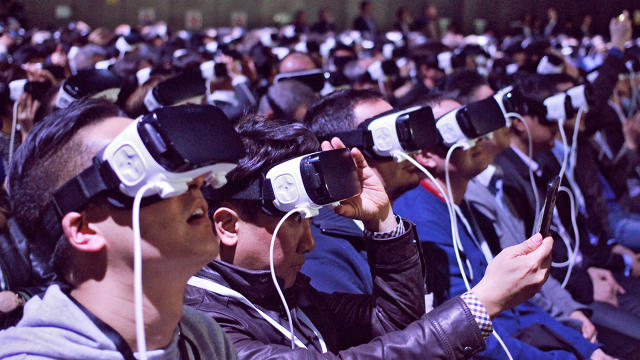
Since I got my hands on the camera (Samsung was nice enough to lend me one to try out), I’ve made a point to pull it out whenever I can. My inauguration for the device was a trip to a foreign country, which I would argue is the best place possible to use it. Sure, I could (and did) snap photos with my trusty smartphone to post on Instagram, but there are some experiences that your standard photograph just can’t capture. Boat cruise in Singapore? Definitely shot a 360-degree video of that. Amazing dinner with more local food than any of us could handle? Took a 360 picture of that, too. Unlike a standard photo of the same scene, almost everyone in our (large) group asked me to see the pic after I took it, and they were mesmerized by the camera’s ability to fully capture that moment.
The best example is the Supertree Grove in Singapore’s Garden’s By The Bay (you can see the video at the top of this story). These massive 165-foot man-made trees look like they’ve been pulled out of a sci-fi novel. The regular photos are good enough to become my Facebook cover image. But a still image, even with a wide-angle lens, doesn’t give you a concept of how huge and futuristic the whole scene feels.
Using the Gear 360 I stood in the middle of the Grove and shot a short video and uploaded it to Facebook, which now supports 360-degree videos. It’s become one of my most popular posts to date.
Better yet, someone could strap on a Gear VR headset and be transported into the scene. The week I got back, I attended a dinner party with some friends who had also gone on the trip with me. When the conversation turned to our vacation, we were able to show the others there who hadn’t gone exactly what it was like to visit some of the places we went to. You just can’t do that with photos.

Tips, Tricks, And When To Put It Away
Capturing pictures and video with a 360 camera is fairly simple. Everything is controlled on your phone (in my case the Galaxy S7 Edge) and, once the devices are paired using Bluetooth or Wi-Fi direct, it’s as easy as snapping your average selfie. I pick between photo or video within the Gear 360 app, press the button, and the Gear 360 starts to record.
The camera is essentially taking two pictures (or videos) at the same time using fish-eye lenses mounted on each side of the camera. Once you’re done, you have to stitch the two together, a process that can be done on your phone or computer using software that came with the camera.
Set a timer. My first dozen videos start with an image of me holding a phone. Oops. Then I figured out how to change the settings on my camera so that it would only begin recording after a 10-second delay. That means that after I hit the shutter button, I have 10 crucial seconds to put away the phone and prepare my shot. While “on her phone” is my real-life default setting, it’s not exactly how I want to be commemorated in virtual reality for all time.
Use a selfie stick. I’m notoriously against using monopods when in public. They’re a nuisance and have been banned from plenty of places already. But it dramatically enhances the quality of the images I was able to take in 360 degrees. Instead of holding the camera in front of me—which means my awkward selfie takes up a whole side of the image or video—I was able to hoist the camera above my head to shoot. That move puts the viewer of my images in the center of the action, so that their head essentially replaces mine as the point of view in the picture. Keep that in mind as you begin authoring your own 360 videos: If you place the camera on the roof of a boat, as I did in order to get an unobstructed view of the harbor, the viewer will feel as though she is riding on top of the boat as well. That may be a good or bad thing, depending on how prone she is to seasickness.
Treat it like a video camera. Most of the 360 cameras out there look more like webcams than still cameras, which is a distinction that I noticed makes people a bit uncomfortable. One night the group I was traveling with decided to take a selfie while all drinking Singapore Slings at the Raffles Hotel, the birthplace of the Sling. Taking a group photo in a bar, especially a famous one, is a totally normal and non-threatening thing. But when I set the 360 camera up on a tripod in the middle of the table, we were rather quickly approached by a bartender and asked to “not record” in the bar. He (and I presume people around us) thought it was a video camera. And perhaps it is more like video than still photos, given the way viewers can explore the image.
Moving around doesn’t work. I shot 360 videos in a number of moving scenarios, but for the most part, I’ve found recording things where you’re the one doing the moving are generally not so great. I shot a video on the back of a boat (where a boat was doing the moving) that worked out wonderfully. A video of me walking around a garden with the camera over my head? Not as wonderful. In a 360 video, the viewer expects to be able to move closer to parts of a scene. In my garden video, for instance, you would have likely approached the flowers you wanted to take a closer look at. When I’m walking, you’re forced to stay on my path, making that experience more like a regular video. And then there’s the natural bouncing we all do when walking, which can make a spirited stroll feel like a carnival ride for the viewer.
You draw attention. No matter where you are, you draw a ton of attention to yourself when you’re walking around with a camera hoisted above your head. Unless you love attracting the concerned gazes of strangers, you don’t want to do that too many times or for too long in crowded places.
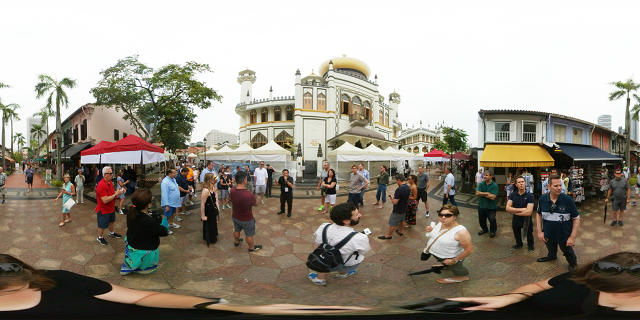
How To Get One
The Gear 360 became available in the U.S., briefly, on June 22 at the VidCon, an online video conference in California. For now, Samsung appears to be focusing on putting the camera in the hands of content creators, the people who ultimately are going to show you what’s possible with the camera, and why you definitely need one.
Samsung plans to make the Gear 360 available to everyone later this year for $349. (And if you just can’t wait, the international-only version is already for sale.)
For the full effect, the Gear VR headset is available now for just $99, and is often free when you purchase a new phone, thanks to a number of different promotions.
Other companies, including GoPro, LG, Ricoh, Nokia, and even Kodak are also making 360 cameras. While Samsung’s option is currently only compatible with Samsung phones, some of the others out there offer iPhone compatibility as well as support for other Android phones.
Like the first iPhone, I think 360 cameras are one of those things most people will need to see for themselves before they really “get” why they need one. Your flip phone was awesome in 2006, right? And even then, 360 could prove to be a novelty—everyone had to have a GoPro, until they didn’t any more. But once you see it in person, and what it can do, it’s hard to go back to shooting regular old photos and videos.
related video: Will Virtual Reality Go Mainstream?
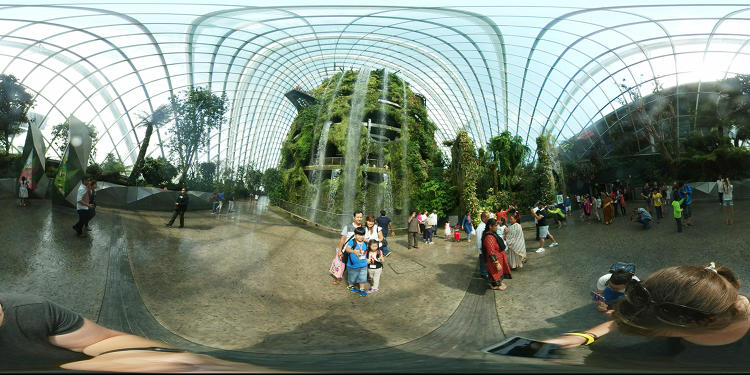
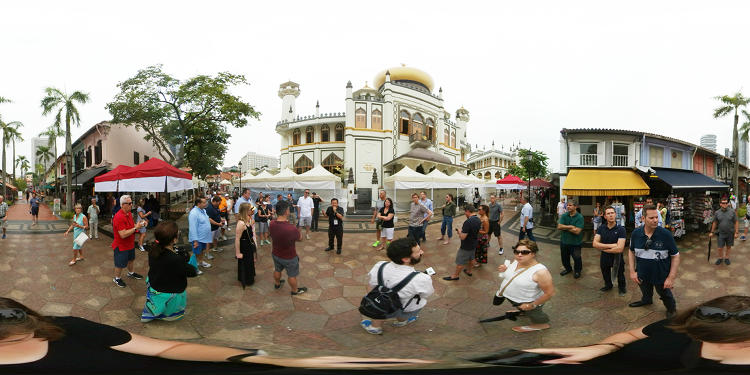
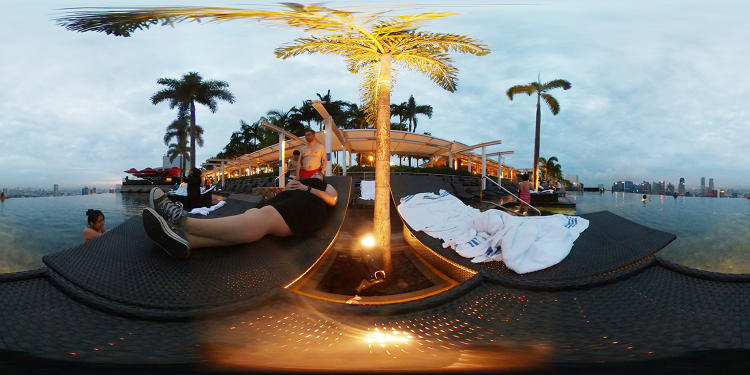

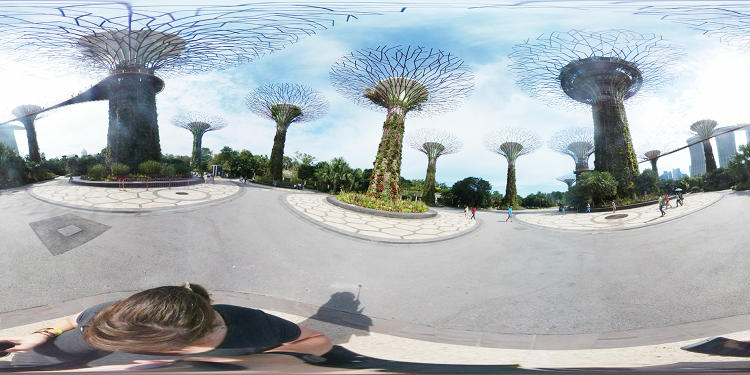

Fast Company , Read Full Story
(28)














